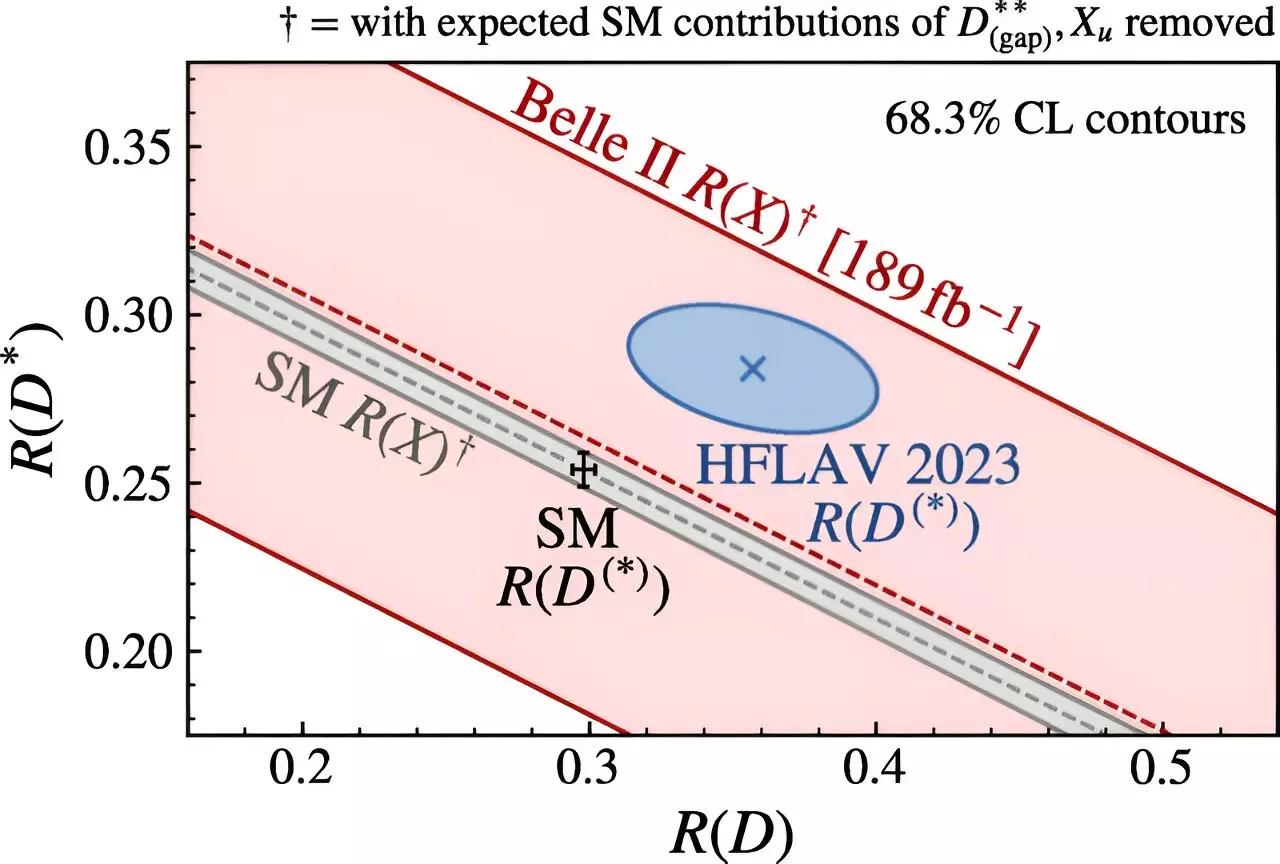The Belle II experiment stands as a beacon of scientific inquiry, dedicated to meticulously measuring weak-interaction parameters and probing the mysteries of exotic hadrons. This ambitious project utilizes the innovative Belle II detector and operates in conjunction with the SuperKEKB particle collider, both anchored at the High Energy Accelerator Research Organization (KEK) in Tsukuba, Japan. The collaborative effort promises groundbreaking revelations in particle physics, offering a platform to explore phenomena beyond the established paradigms of the Standard Model.
At the heart of Belle II’s recent achievements is a fascinating study published in *Physical Review Letters*, unveiling the first direct measurement of the tau-to-light-lepton ratio, denoted as ( R(tau/ell) ), concerning inclusive B-meson decay fractions. This landmark measurement not only validates significant theoretical aspects of particle interactions but also opens doors to explore potential violations of the lepton universality principle—a crucial tenet that suggests all charged leptons (electrons, muons, and taus) interact identically with weak forces.
Testing the Foundations of Particle Physics
Karim Trabelsi, spokesperson for the Belle II Collaboration, eloquently articulates the implications of these findings: “Within our current best theory of particle physics, the Standard Model, charged leptons—electron, muon, and tau—couple identically with weak and electromagnetic forces.” The essence of this statement underscores the critical nature of the experiment, as any deviation from this coupling could herald the discovery of novel physical phenomena.
Intriguingly, the motivation behind measuring the tau-lepton interaction lies in a previously noted discrepancy between average measurements and theoretical predictions. Historically, investigations into the tau particle’s behavior have largely concentrated on exclusive decay processes, often narrowing the focus to decays accompanied by singular charmed mesons. Belle II’s inclusive approach broadens the horizon, allowing for a comprehensive analysis framed beyond these limitations.
Methodology: An Ingenious Data Collection Approach
The Belle II team prides itself on a uniquely thorough methodology. Their measurements hinge upon producing pairs of B mesons in electron-positron collisions, skillfully sidestepping complications that may arise from additional particles. This technique enables the researchers to fully reconstruct one B meson while simultaneously searching for a light lepton emerging from the decay processes of the other B meson. Such an approach signifies a leap forward in exploring tau decay characteristics, laying a foundation for future inquiries into lepton universality.
The data-driven analysis focuses on the momentum profiles of the leptons produced in these decay sequences. Notably, leptons stemming from tau decays generally demonstrate lower momentum when juxtaposed with those directly emanating from B meson decays. By carefully evaluating the distributions and calibrating background noise, which can obscure the signal of interest, the scientists can discern between prompt leptons and those resulting from tau decay—an undoubtedly intricate but rewarding endeavor.
Challenges and Future Pathways
Despite the exciting breakthroughs achieved, Belle II’s research is not devoid of challenges. Systematic uncertainties introduced during the calibration processes present hurdles that the collaboration acknowledges. However, Trabelsi is optimistic about future developments: “Even though our measurement aligns with the Standard Model predictions and hints at anomalies observed in exclusive decay processes, we are paving the way for complementary probes of lepton universality.” This sentiment encapsulates the spirit of scientific exploration—a blend of cautious optimism and relentless inquiry into the unknown.
As Belle II continues to gather data, the implications for fundamental physics could be transformative. Ongoing data collection activities promise to refine these measurements and potentially reveal insightful correlations that could confirm or refute existing theories about lepton universality. Such advancements would bolster the search for non-standard model particles, thereby enriching our understanding of the universe’s underlying mechanics.
A New Era of Discoveries Awaits
In the grand tapestry of particle physics, the Belle II experiment is crafting a narrative that could redefine our conceptual understanding of matter and forces. By daring to probe the delicate fabric of weak interactions and pushing the boundaries of established science, the collaboration exemplifies the relentless pursuit of knowledge. As they stand on the precipice of potential new discoveries, each data point collected and analyzed not only strengthens their present endeavors but also amplifies the promise of future explorations into the profound yet enigmatic world of subatomic particles. The next chapters in this scientific saga are poised to emerge, offering tantalizing glimpses into realms previously shrouded in mystery.

